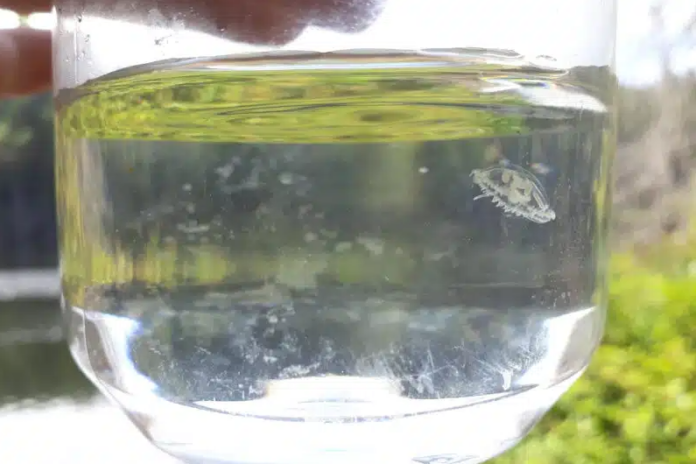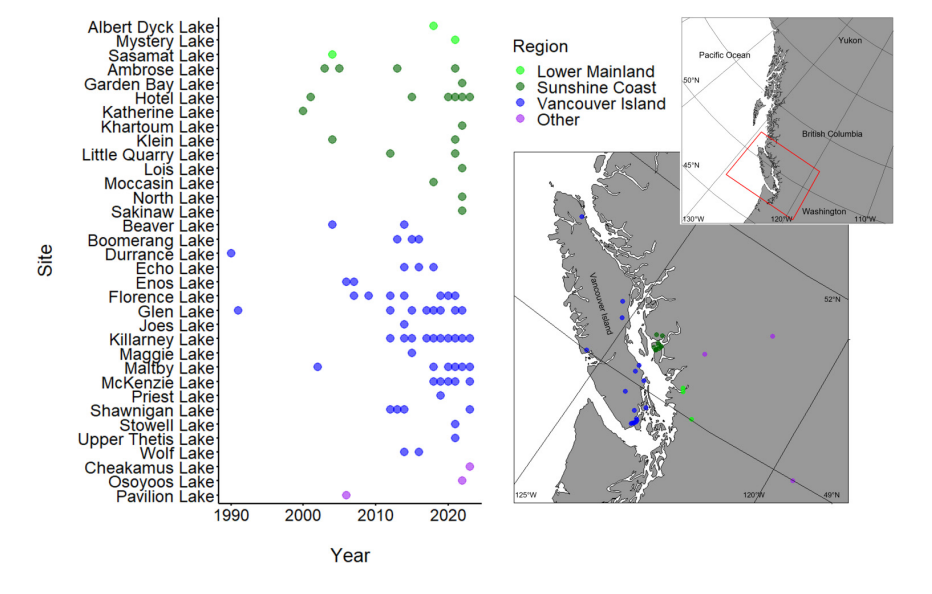With warmer water the new normal during BC summers, invasive freshwater jellyfish are emerging as a potential threat to wild salmon.
Florian Lüskow with UBC recently published a study of peach-blossom jellyfish in BC, where the species appears to be growing and expanding its northern range thanks to recent warm summers. He says there isn’t enough data yet to say for sure, but the population’s recent growth could pose a threat to juvenile salmon food sources.
“When there are these massive blooms of tens of thousands of jellyfish, they are competing with other planktivorous organisms,” he says. “Plankton, tiny little animals that drift with the water currents, are the primary food for juvenile fish and also very young fishes.”
The jellyfish have been spotted in lakes, ponds, and quarries on the Island from Victoria to Port Hardy, including Echo Lake near Campbell River. They have never been observed in creeks or rivers and prefer warm, shallow freshwater.
Lüskow is hoping to expand testing in BC through citizen scientists and technology that can detect the DNA of creatures in a body of water. He describes a backpack-mounted system which is commercially available. It’s user-friendly, allowing anyone to take water samples and use the system to analyze the water. It will detect trace DNA from creatures living in the water and identify them for researchers.
The environmental DNA, or eDNA, systems have been used to detect the jellyfish successfully in Belarus, Korea, and Switzerland. However, they are expensive — one backpack system costs more than $10,000 — so Lüskow is on the lookout for grants and government programs which could help fund more research. He says the Craigflower Creek watershed near Victoria and the Garden Bay area of North Pender Harbour would be the perfect places to start, as they are easily accessible and have already had a significant number of previous sightings.
The freshwater jellyfish originated in China, but are now found on every continent except Antarctica. They were first identified in BC in 1990.The Invasive Species Council of BC says they were introduced in the 1930s, likely along with the importation of ornamental aquatic plants from China. Luskow says in their tiny polyp form, about the size of a grain of sand, they can survive in dormancy for a long time away from water.
The species name is Craspedacusta sowerbii, and Lüskow points out so far in BC only males have been sighted, all clones. That means the jellyfish are only reproducing asexually. In other places where females are present, such as the Great Lakes, he says sexual reproduction gives them the capability to adapt more quickly to changing environments.
The sightings in BC are the northernmost confirmed occurrences of the species in North America, making them critical to study as signs of ecosystems responding to climate change.







